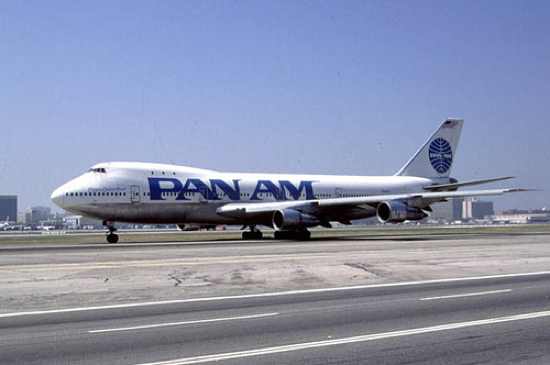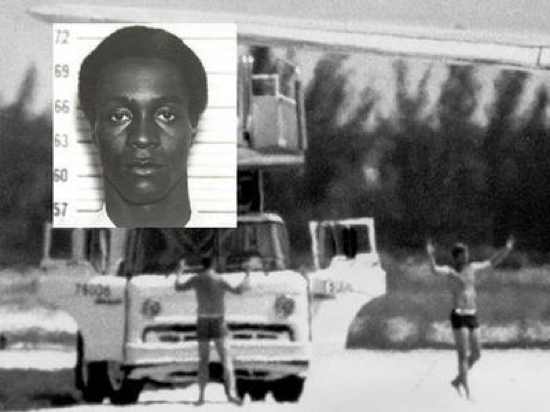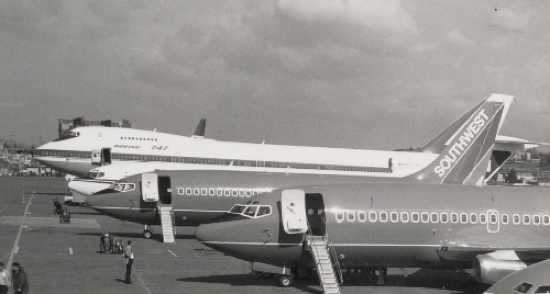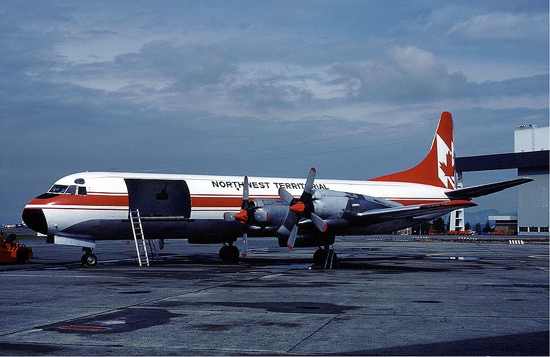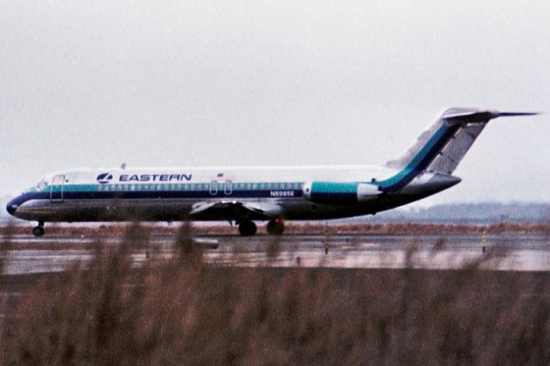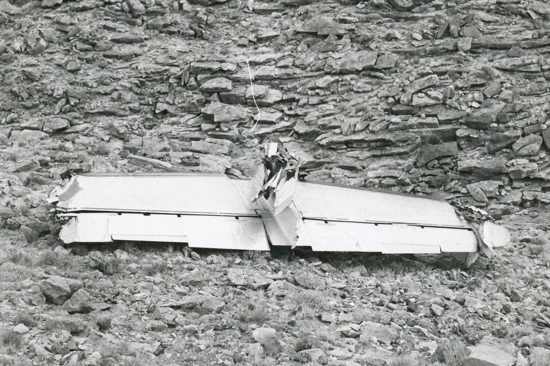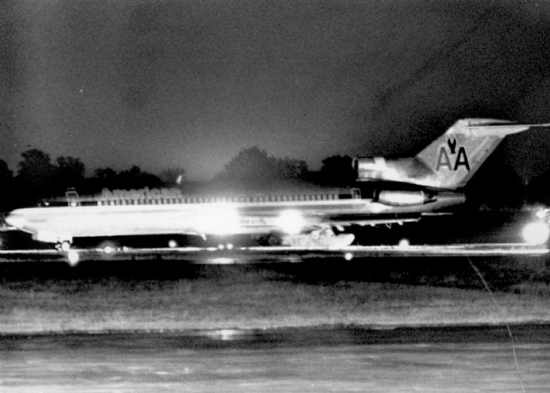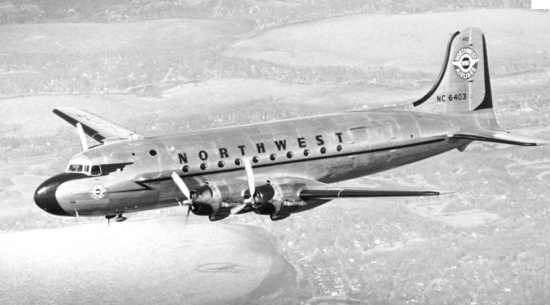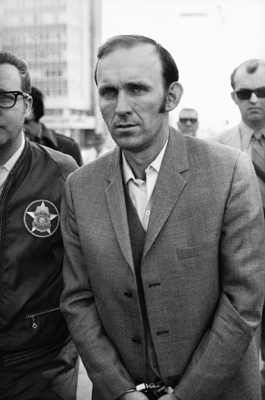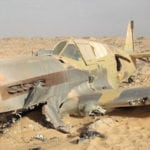There was great confusion during this period of time about what to do with the hijackers – give into their demands or try to take them out (this ended on September 11, 2001, after which there was no more debate). No one was even sure who had jurisdiction. Was it the FAA or was it the FBI (J Edgar Hoover thought it was most defiantly the FBI). And so it was the hijackers managed to pull off their crimes against a confused and non-coordinated response system. By the end of 1972 over 150 American airplanes had been hijacked. The number of US hijackings began to decrease in 1973 after Cuba and the US came to agreement on means to return hijackers to the US for prosecution. Also, on Jan. 5, 1973, federally mandated measures designed to tighten airline security – metal detectors, searches of carry-on luggage and passengers – went into effect for the first time. These measures would cut hijacking attempts from their peak of one every other week in 1972 to a mere three between 1973 and 1974. By the ’80s, domestic hijackings seemed a thing of the past, a perception that persisted right up to the 9/11 attacks. But during the 1961-1972 skyjacking golden years, upwards of 50% of hijackers were successful. Here are the top ten US airplane hijackings for that time period (including the start of the ’70s).
May 1, 1961 and a US Airlines Convair 440 airplane is traveling from Marathon Florida to Key West. It would become the first US airplane hijacked to Cuba. A US Korean War veteran named Antulio Ramirez Ortiz, boarded the plane with a knife and gun, demanding the pilot to divert the aircraft to Cuba, as he was seeking asylum in the country. At the time, US domestic airlines had no history of aircraft hijackings and when the airplane disappeared from its intended flight route it was assumed to be lost and missing at sea. At the time, hijacking an airplane was not even a US federal crime. After Ortiz was apprehended in Jamaica in 1975 he was only charged with assault and transportation of a stolen aircraft over state lines. Ortiz lived to regret his decision to seek asylum in Cuba as Castro thought he was a US spy and he spent years in Cuban prison. He was released and in 1972 he attempted to escape Cuba by raft, but was apprehended by Cuban officials and spent another 3 years in prison.
On November 24, 1968, three men, (one named Castro), hijacked a Pan Am flight with 103 people on board from New York’s JFK Airport and diverted the flight to Havana, Cuba. The hijackers grabbed a stewardess and put a knife to her neck then pointed a loaded gun in the face of the flight engineer saying “Cuba, Cuba, Cuba.” Passengers were forced to leave the airplane when it landed in Havana and no one was injured. Two of the three hijackers were captured in the 1970s but a third lived as a fugitive in Cuba until 2009 when he returned to the US and surrendered. At his trial he claimed he wanted to return to the US to be with his wife who had fled Cuba in 2004. He asked for leniency and a sentence of no more than 4 years but the Judge was having none of it and on January 4, 2011 the hijacker was sentenced to 15 years in prison, without the possibility of parole.
On July 31, 1972, Delta Airlines Flight 841 was hijacked by three men and two women. They demanded money and to be flown to Algiers, following a refueling stop at Boston. With the $1,000,000 ransom they extorted from Delta they were on their way to Algiers to join Black Panther Eldridge Cleaver’s “Afro-American Liberation Army.” However, once in Algiers, the Algerian government showed no intention of letting the Panthers get their hands on the Delta ransom. Cleaver was outraged and dashed off an open letter to President Boumedienne. “We must have the money,” he told his host. Instead, the hijackers were put onto another plane, an Air Algérie 727 that settled down at Paris’ Orly Airport with a large contingent of French police following it as it taxied to a stop. Each of the men carried off the plane a brand new and obviously heavy black suitcase with a discreet plastic tag bearing the name and symbol of Delta Airlines. Inside the suitcases was the $1,000,000 in $50 and $100 bills. The money was returned to Delta and the hijackers arrested.
The Republic of New Afrika (RNA), was a social movement that proposed the creation of an independent African-American-majority country situated in the southeastern United States, the payment of several billion dollars in reparations for the damages inflicted on Africans and their descendants by chattel enslavement, and a referendum of all African Americans in order to decide what should be done with regard to their citizenship. The vision for this country was first promulgated on March 31, 1968, at a Black Government Conference and proponents lay claim to five Southern states: (Louisiana, Mississippi, Alabama, Georgia, and South Carolina). In November, 1971, Charles Hill, Ralph Lawrence, and Albert Finney were driving a carload of weapons to Louisiana as part of the Republic of New Afrika militant group. They murdered New Mexico State Police officer Robert Rosenbloom during a traffic stop and escaped to Albuquerque where at gunpoint they hijacked a TWA 727 to Cuba. Today, Hill is one of several US hijackers still living in Cuba. Hill said that Cuba was supposed to be a “pit stop” to Africa, but the three fugitives decided to stay. He does not regret killing Officer Rosenbloom. Law enforcement in the US want to return Hill to the US to face punishment but as of 2000 Cuba had refused to do so. Michael Finney also lives in Havana. The third suspect, Ralph Lawrence reportedly drowned in 1973.
With ominous foreboding of what was to come 29 years later, (threats to crash a plane filled with passengers into a building), on November 10, 1972, Southern Airways Flight 49 with 31 people on board, bound from Birmingham to Montgomery, Alabama, was hijacked by Melvin Cale, Louis Moore and Henry D. Jackson, Jr. and flown to multiple locations in the United States, and one Canadian city. The hijackers had hand grenades and pistols and demanded $10 million in ransom. At one point the hijackers threatened to fly the plane into the nuclear reactor at the Oak Ridge National Laboratory, if their demands were not met. One of the hijackers threatens – “I’m not playing. If you do not get that money together, I’m gonna crash this plane in Oak Ridge.” Eventually the plane lands in Cuba but Fidel Castro will not give the hijackers asylum in the country so they force the pilots to fly back to Orlando, Florida. They consider going to Switzerland but the aircraft is not large enough to fly across the Atlantic. While stopped for refueling at McCoy Air Force Base, Orlando, the FBI shot out the plane’s tires, prompting the hijackers to force pilot William Haas to take off again. The hijacking came to an end when the plane landed on a partially foam-covered runway in Havana, Cuba, and the hijackers were captured after attempting to escape. They each spent 15-20 years in jail in Cuba before being sent back to the US for further sentencing. Cuba also returned the cash to the US. The hijacking lasted a total of 30 hours and covered 4,000 miles.
On January 12, 1972 a Braniff Flight 38 Boeing 727 was hijacked from Houston Texas as it was bound for Dallas. The lone hijacker was Billy Gene Hurst, Jr., a man with a long history of mental illness and unstable behavior. Armed with a .22-caliber pistol, Hurst hijacked the plane and then allowed all 94 passengers to deplane after landing at Dallas Love Field. He continued to hold the 7 crew members hostage, demanding to fly to South America and asking for $2 million in cash as well as parachutes, a .357 magnum pistol, and jungle survival gear. However, Hurst would never get to jump from the aircraft. Before taking off and while he was distracted by a package containing the parachute and .357 handgun (modified so it could not be shot) the crew secretly fled the airplane. With no hostages left on the plane, the police stormed the aircraft and arrested Hurst without incident. He was tried and sentenced to 20 years in prison.
Shuttle Flight 1320, was heading from Newark, New Jersey to Boston and coming in for a landing when it was hijacked at 7:30PM on March 17, 1970. The hijacker, a man by the name of John Divivo (who had a bullet still lodged in his head from an earlier incident) had a .38 caliber revolver and demanded the stewardess take him to the cockpit of the DC-9. Once there all he demanded was to be taken east. The pilot instructed the stewardess to return to the cabin and when she did, the pilot and copilot struggled with Divivo for the gun. Divivo then shot the pilot, Captain Robert Wilbur Jr., twice, once in each arm. Though he was injured from a gunshot wounds and bleeding, Wilbur, a former Air Force pilot, flew the aircraft to a safe landing. Divivo also shot the copilot, First Officer James Hartley, once in the chest. Despite being fatally wounded, Hartley ripped the gun from Divivo’s hand and shot Divivo three times before Hartley collapsed and died. Wounded but not dead, Divivo tried to claw at the pilot and force him to crash the plane. The wounded pilot got the gun and bashed Divivo over the head, knocking him out. All of this took place at an altitude of only 3,000-5,000 feet as the plane was coming in for a landing. Upon landing at Logan Airport, Boston Captain Wilbur told the airport – “my copilot has been shot. Where the hell do you want me to park this thing?” Divivo was arrested and later hanged himself in prison before trial. First Officer Hartley became the first pilot to be killed during a hijacking in US history.
On January 28, 1972 TWA Flight 2, was flying over Chicago midway between Los Angeles and New York, when a career criminal and bank robber by the name of Garrett Trapnell tried to hijack the plane. Trapnell, the nephew of WWII and Bataan Death March veteran Thomas Trapnell, boarded the jetliner in Los Angeles with an automatic pistol concealed inside a fake plaster arm cast. He took control of the plane and demanded $306,800 in cash (to recoup the loss of a recent court case), the release of Angela Davis (as well as that of a friend of his who was also imprisoned), and clemency from President Richard Nixon. At one point he threatened to crash the plane into the terminal at JFK if his demands were not met. The plane landed at Kennedy airport and while the crew was being changed on the ground, agents from the FBI took control of the airplane – shooting and wounding Trapnell. No one else was injured. Trapnell himself did not deny the hijacking, but he claimed it had been done by his wicked alter ego, Gregg Ross. He was a Jekyll-Hyde personality, he said. Appearing in Brooklyn’s U.S. District Court he pleaded not guilty but after one locked jury led to a mistrial, he was sentenced to prison for his crime. However, Trapnell had become so adept at manipulating the insanity plea to stay out of jail, and his hijacking case was such a high profile trial, that the mistrial sparked a nation-wide debate about redefining a person’s ability to plead insanity as a defense. Making sure the art of screwing up an intended hijacking stayed within the family, Trapnell and hijacker Martin J. McNally (see American Airlines Flight 119) attempted to escape federal prison on May 24, 1978, after Trapnell’s girlfriend Barbara Ann Oswald hijacked a helicopter and tried to force the pilot to land at the prison. Instead, the pilot grabbed the woman’s gun and killed Oswald. On December 21, 1978 Oswald’s 17 year-old daughter Robin Oswald hijacked TWA Flight 541 in another attempt to rescue Trapnell. She surrendered after 10 hours of negotiations and Trapnell, once again, remained in prison.
By mid-1972 the DB Cooper copy cat hijack craze was in full swing across the USA. In the ninth copycat-hijacking attempt, Martin J. McNally under the pseudonym of Robert W. Wilson, hijacked a St. Louis, Missouri to Tulsa Oklahoma American Airlines Flight 119. McNally demands $502,500 (picking up on Trapnell’s idea to ask for non-even amounts of cash). McNally forced the pilots to fly the plane back and forth between Tulsa and St. Louis while authorities counted out the $502,500. This time the hijacker was armed with a .45-caliber submachine gun he snuck on board in a trombone case (I realize security was relaxed in 1972 by today’s post 9-11-01 standards, but really, a machine gun?). When he took charge of the flight, the gunman at first ordered the pilot to return to St. Louis but changed his mind and directed the flight to Fort Worth, Texas. He changed his mind again and ordered a return to St. Louis, where he released all but one of the 92 passengers. The gunman asked for the money, a parachute and instructions on how to use it. Seeing their chance to apprehend the hijacker, two FBI agents posing as airline officials boarded the plane. One showed him how to use the parachute and how to jump from the airplane but they were unable to grab him because the hijacker kept his machine gun aimed at an attendant. The pilot reported the hijacker was satisfied with the money and parachute and the plane began taxiing down a runway when a 1972 Cadillac came driving at the plane. St. Louis businessman David Hanley, 30, had been sitting in a motel bar near the airport when he became aware of the unfolding hijacking out on the runway and decided to act. He told a friend “turn on the radio in a few minutes and you’ll hear something that will rock the world” and left. A few minutes later, Hanley began his chase of the taxiing jet at speeds up to 90 miles per hour. He crashed his car (which had been a Mother’s Day present to his wife) through an airport gate onto the runway, went to the end of the runway, turned around and headed straight toward the plane. The Cadillac caromed off the plane’s nose gear and into its landing gear in an attempt to stop the hijacking. The car was demolished and Hanley was critically injured in the crash. Not to be deterred by such a heroic act of stupidity, the hijacker transferred to a new aircraft and with pilots, crew, and one passenger as hostages, instructed the pilot to head for Toronto and then to head for John F. Kennedy Airport in New York City. McNally never made it to New York; he jumped out over Peru, Indiana. In the air, he became separated from his money and machine gun. The money was found by farmer Lowell Elliott. “I thought it was a groundhog in the field,” Elliott said. “It didn’t move so I took a closer look.” Meanwhile, the gun was found five miles away by another farmer, Ronald Miller, who at first thought the commando-type weapon was a toy when it was turned up by the blades of a liquid fertilizer distributor. He survived the parachute drop and later, fingerprints led to police and FBI to McNally who was arrested and sentenced to two life terms in prison. While serving time for his crime in Marion Federal Prison, McNally and fellow inmate and hijacker Garrett Trapnell (see TWA Flight 2) tried their escapes.
In what would become the only still unsolved hijacking case in US history, on November 24, 1971 the now famous DB Cooper hijacked a Northwest Orient Airlines flight, a Boeing 727-100 which was flying from Portland, OR to Seattle WA. The hijacker checked in as “Dale Cooper,” paying cash for his ticket. He boarded the airplane and hijacked it. When the first news wire reporter from the Washington area picked up on the unfolding hijacking over police radio, he asked if the police had a name for a suspect. In fact, they did. The police had interviewed the man who sold Cooper the ticket and asked him if any of the passengers looked suspicious. Without hesitating, the airline employee responded – “yes, Dale Cooper.” The police told the news reporter the suspect’s name was “D. Cooper”. The reporter asked if that was a “D or a B?” The person responded, “yes.” And thus the legend of “DB Cooper” was born. On board the plane, shortly after take off, Cooper claimed to have a bomb in his briefcase and, showing it to an airline stewardess, it sure looked convincing with red sticks that may or may not have been dynamite, and a battery and lots of wire. The pilots took the threat seriously and the owner of the airline agreed to Cooper’s demands – $200,000 cash, any denomination, in a satchel, plus two front and two rear parachutes (plus food for the flight crew). This was to be delivered to the plane when it landed and was refueled. Marked $20 bills were loaded into a satchel and handed over to the stewardess who delivered the money to Cooper. The entire time Cooper remained mostly calm and congenial at the rear of the plane. At no time did he harm anyone on board. Everyone but the flight crew and the stewardess were allowed to leave the plane. Cooper gave orders for the plane to take off and fly south towards Reno at no more than 10,000 feet and with the hydraulically operated rear staircase lowered and extended. The plane could not take off with the rear staircase deployed so Cooper allowed the flight crew to take off with it raised and secured. Somewhere over the woods of Oregon/Washington, Cooper opened the rear staircase and jumped out with his parachutes and cash – the cash strapped to his chest with the cords of one of the parachutes. It was dark and though other planes were trying to tail the hijacked plane, no one actually saw Cooper jump. Cooper had forced the flight crew to stay forward behind the drawn first class curtain so they too did not see Cooper jump. Therefore, no one could say the exact time Cooper bailed out. The best estimate was he jumped at 8:13PM but given the many changes in the flights air speed, the bad weather, and other factors, the search area for Cooper was huge, well over a hundred square miles of some of the most inaccessible and rugged terrain in the continental United States. The search turned up no trace of Cooper or the money. In February 1980, an eight year-old boy named Brian Ingram, vacationing with his family on the Columbia River about 9 miles downstream from Vancouver, Washington uncovered three packets of the ransom cash, significantly disintegrated but still bundled in rubber bands. FBI technicians confirmed that the money was indeed a portion of the ransom. The boy and his family sue to get the money they found and the judge rewards them half of it. Later, needing alimony money, a now grown Brian sells some of the Cooper loot to raise needed funds. No other traces of Cooper have so far been found. Did he survive the jump? Some believe he did. Later tests by the FBI demonstrated that it was possible to jump from the rear staircase platform of a 727 and survive. Others believe he jumped out of the plane at a different point than the FBI originally calculated and landed in the Columbia river and drowned. There, some of the money washed up on the beach where young Brian discovered it. Others believe Cooper lost the money in midair or landed with it and stashed it in the ground. Later, rain carried the money down creeks that flow into the river. But what ever his fate, DB Cooper became an American folk hero.
Flying under the name James Johnson, Richard Floyd McCoy buys a one-way ticket to Los Angeles and, like DB Cooper, sits in the last row of the airplane, near the lavatory. He is wearing a toupee, makeup, and mirrored sunglasses. He carries a fake hand grenade and a real pistol. He hands a stewardess a note that says, “we have a grenade, the pin has been pulled, we have pistols, they are loaded, we have C-4 explosives.” He gets what he wants – $500,000, four parachutes and the plane heading changed to Provo Utah. The passengers are allowed to disembark at San Francisco. Like DB Cooper, the airplane is empty except for some crew to fly the plane and himself. He lowers the aft staircase of the Boeing 727 and holding the duffel bag of money, jumps out of the plane. Cooper may have had military experience but there is no doubt McCoy had it. He was a decorated Vietnam War veteran. But unlike DB Cooper, we know how McCoy’s jump goes very badly. He spins out of control, his chute jams and will not release, Finally the chute deploys, he somehow manages to land and not be killed or injured. McCoy makes his way to a restaurant and offers money to a young man for a ride. Along the way they must pass through police roadblocks set up around the area where the police and FBI know the hijacker jumped. McCoy brags to the young man how easy it would be to pull off such a hijacking. Once at home, after stashing the parachute and money, McCoy gets a call from a parachute buddy who also happens to be a state trooper asking him if he was the one who skyjacked that airplane? McCoy feels he can trust the trooper. Meanwhile, the young man tells the police the guy he picked up was acting suspicious. Two days later, McCoy is arrested, after the police find most of the money in his house. At the time of his arrest McCoy, a National Guardsman, is flying one of the National Guard helicopters searching the area for the hijacker. McCoy is sent to Lewisburg Federal Penitentiary in Pennsylvania with a sentence of 45 years. In prison, McCoy manages to break out with several other prisoners using a fake pistol made from a mold filled with dental wax. Brandishing the dental wax pistol, they commandeer a truck and smash it through they prison gates. He and his fellow escapees go on a run of hold ups around the east coast of the USA before they are finally cornered in Virginia Beach, Virginia. McCoy is confronted by the police and he opens fire. The police return fire and Richard Floyd McCoy is dead at age 31.

